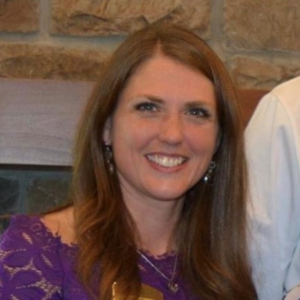Reconnecting families through Sweet Melodies
“Music expresses that which cannot be said and on which it is impossible to stay silent.” —Victor Hugo
Neurologists and psychologists have studied the effects of music on the human brain since the 1990s. Early research illustrated how music can actually elicit memories and physical responses. However, it was not until 2009 when Dr. Petr Janata, PhD, then an associate professor of psychology at the University of California–Davis’ Center for Mind and Brain, published a study entitled “The Neural Architecture of Music-Evoked Autobiographical Memories,” that researchers began connecting the importance of music with Alzheimer’s and dementia treatment.
Janata’s study provided a road map for us at Commonwealth Senior Living. As one of the 50 largest senior living providers in the United States with over 1,400 residents, our goal with building a new program around music was to treat not only an individual’s physical symptoms, but also their emotional ones.
To truly gain an appreciation for how music impacts a person’s mind, Janata mapped the human brain activity of a group of individuals diagnosed with Alzheimer’s disease. He found a tremendous increase in brain activity in the medial prefrontal cortex region when people experienced music. The medial prefrontal cortex is one of the last places affected by the atrophy associated with Alzheimer’s and related dementias.
Later studies by Jane M. Flinn, PhD, associate professor of psychology at George Mason University, and Linda Maguire, a musician and neuroscientist at Johns Hopkins School of Public Health, took that research a step further. After a four-month study in several senior care communities, they concluded that music did increase brain activity but that the type of music played to individuals with Alzheimer’s disease mattered.
Results from the study showed that songs elicited different reactions from different people. Sometimes there was no response, other times a positive response or a negative response. It all depended on the individual’s history with those songs. Some music like the "The Star-Spangled Banner" or “When You Wish Upon a Star” from Pinocchio were universally loved and created positive emotions and responses. However, what this research taught long-term care providers was that this was an area that required individualized attention.
An individualized approach
The research to date proves the effectiveness of music for those with Alzheimer’s disease or other forms of dementia. However, it also leaves long-term care and senior living providers wondering how they can take advantage of this knowledge. When we examined the studies conducted, we found several key take-aways:
1. Knowing the patient/resident’s history is critical.
2. Therapies such as these require a great deal of time and attention.
3. Each patient/resident is unique, and therefore the song selection needs to be customized.
4. Responses and emotions will manifest themselves differently in different people.
5. The families of the patient/resident should be involved in the process.
Understanding and appreciating these points provided the blue print for the Sweet Melodies program at Commonwealth Senior Living. As researchers of Alzheimer’s and dementia, we approached the creation of this program carefully. The comfort, care and well-being of each and every resident is the top priority for every long-term care and senior living provider.
 First, we outlined our objective for the program: to reconnecting residents with Alzheimer’s with their loved ones. Sweet Melodies is a tool that allows both the residents and their loved ones to engage in a meaningful and emotional moment like they did before the disease began to take hold. Luckily, films like Michael Rossato-Bennett’s Alive Inside gave family members a window into that objective. They were able to see first-hand the power music has on the human brain and longed for that rekindled relationship. Therefore, it was fairly easy to ask their permission when moving forward with specific residents.
First, we outlined our objective for the program: to reconnecting residents with Alzheimer’s with their loved ones. Sweet Melodies is a tool that allows both the residents and their loved ones to engage in a meaningful and emotional moment like they did before the disease began to take hold. Luckily, films like Michael Rossato-Bennett’s Alive Inside gave family members a window into that objective. They were able to see first-hand the power music has on the human brain and longed for that rekindled relationship. Therefore, it was fairly easy to ask their permission when moving forward with specific residents.
The next step in the process was to use all of the research collected by the Alzheimer’s Association and others to actually build the details of the program. For lack of any better term, we concluded that there needed to be a nine-week “study period” with each resident. This would provide an ample amount of time to gauge his/her emotional reactions to a wide array of music.
Individuals with Alzheimer’s and other types of dementia often are in a state of agitation, so we limited each music session to 15-20 minutes every other day. That nine-week study period provided just enough time to measure conclusive results for each resident.
Next, we knew that digital MP3 players were the only way to provide enough variety of songs to measure emotional reactions. The music selections ranged from religious to patriotic to dance and more, but it was always from the time period that the resident would identify with most.
Finally, we built off Flinn’s study to create a list of the different types of responses that a resident could have. They included eye movements, singing, dancing, tapping, and other behavioral cues. Each of these responses were carefully documented to help us see which types of songs created which reactions.
Implementation
After the details of the Sweet Melodies program had been finalized, we chose our memory care community in Norfolk, Virginia, for the first trial. We spoke with family members of the residents to see if they would be willing to participate. Once the participants were selected, we sat down with their families to learn more about their loved one’s history. The insight that they provided was invaluable and helped us choose which songs would solicit the results we were hoping to secure. One of the things that was learned through the nine-week study period was just how important the documentation process was. Measuring different responses and reactions ensured the program’s success and helped to avoid any negative outcomes.
Evaluation
The initial trial in Norfolk was a great success. Music playlists were developed for each resident and provided to them after the study period. Resident responses included singing and dancing to the songs, which thrilled family members sharing in those moments. Most importantly, the objective that we had set out from the outset was being met. Meaningful moments were occurring between residents and their loved ones that had not happened in years. We have been able to replicate the same results at several other communities over the past year and will continue to refine and make adjustments. However, it is clear that the individualized approach to the program was the key in making it successful.
Music is a truly wonderful thing. The research that neurologists and psychologists have and continue to do around music provide great insight into the human brain and how it functions. As long term care and senior living providers, we should use this knowledge to help bring a brighter smile to our residents’ faces.
Bernie Cavis is Vice President of Resident Programs, Jerry Lynn Daniels is Regional Director of Programs and Paula Hader is Regional Director of Programs of Commonwealth Senior Living, headquartered in Charlottesville, Virginia. They can be contacted at 888-391-2406.
Related Articles
Topics: Alzheimer's/Dementia , Articles











